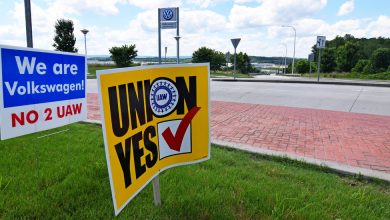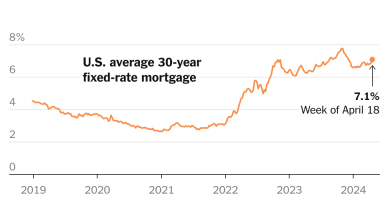FEMA Says It’s Still Working to Fix Racial Disparities in Disaster Aid

WASHINGTON — Almost a year after a being urged to address racial inequity in United States disaster programs, officials are still trying to decide how to deal with the problem, according to a document issued by the Federal Emergency Management Agency on Wednesday.
The agency was responding to recommendations made in November by its own advisory panel. It is the latest evidence of the challenges facing the Biden administration in its push to reduce racial disparities in climate policy.
“The language is very much, ‘We’ll explore, we’ll identify, we’ll consider, we’ll investigate,’” said James R. Elliott, a sociology professor at Rice University who has studied racial disparities in FEMA’s programs. “There seems to be a lot of hemming and hawing.”
A growing body of research shows that FEMA, the government agency responsible for helping Americans recover from disasters, often helps white disaster victims more than people of color, even when the amount of damage is the same. Not only do individual white Americans often receive more aid from FEMA, so do the communities in which they live, according to several recent studies based on federal data.
“I don’t think any of their policies are intentionally designed to be unequal,” said Emily Gallagher, a finance professor at the University of Colorado Boulder who has studied racial discrepancies in FEMA grants.
She said the data showed instead that the agency’s programs have favored disaster victims who are wealthy and own property, and who are more likely to be white, over lower-income individuals and families, who are more likely to be people of color.
“This is a really difficult problem to solve,” Dr. Gallagher said. Based on FEMA’s response to its advisory panel, she added, “It really just sounds to me like they’re still working on it.”
Citing data on racial disparities, FEMA’s National Advisory Council, a group of emergency-management experts appointed by the agency, concluded in November that FEMA was failing to meet its legal obligation to help disaster victims without discrimination on racial or other grounds.
“Many FEMA programs do not consider the principle of equity,” the report read.
The council made four specific recommendations to the agency to address racial disparities more effectively.
First, it called on FEMA to create an “equity standard” — measures that would show whether the agency’s grant programs “increase or decrease equity over time.”
Second, the council recommended that FEMA decide how to make its grants to state and local governments more fair, and that it put a new system in place by the end of 2021. Data show that wealthier communities tend to get more money from FEMA than their poorer counterparts, even when the scope of the disaster is the same.
Third, the council called on FEMA to create a training program for its workers to make them more sensitive to racial diversity, equity and inclusion.
Finally, the council told FEMA to establish clear directives and policies for hiring a work force that “reflects the populations it serves.” The council asked the agency to establish those training and hiring practices by the middle of 2021.
Based on its response published on Wednesday, FEMA has yet to meet any of those recommendations.
The agency noted that it had handed responsibility for creating an equity standard back to the advisory council itself, adding that it “looks forward to receiving the resulting recommendations” in the council’s next annual report. FEMA also said it was still assessing the fairness of its grant programs to state and local governments and would consider changes once that assessment was done.
On training, FEMA said it would “conduct a review” of current programs and develop a new one if needed. And the agency said it was “expanding our outreach, recruitment and hiring engagement efforts,” but made no mention of specific new hiring directives or policies.
FEMA’s response noted few tangible policy changes so far to address racial equity. Among those it identified were creating a group to look at equity problems, which the agency said had come up with a definition of what equity means at FEMA: “The consistent and systematic fair, just, and impartial treatment of all individuals.”
Justin Knighten, FEMA’s director of external affairs and a member of the agency’s working group on equity, said the agency had taken steps that weren’t mentioned in the document.
“The agency has been moving across the board, on many different fronts, to drive to advance equity,” Mr. Knighten said in an interview. He said the agency’s response to its advisory committee “demonstrates that movement, but also where we have more work to do.”
He pointed to the decision to make it easier for disaster victims to get help even if they can’t provide specific documents showing they own their property — a requirement that had disproportionately hurt Black families in the South who inherited their homes.
Mr. Knighten said FEMA would reveal more about its plans on racial equity in its latest strategic plan, which he said was expected by the end of this year.
But academics who study racial disparities in FEMA’s programs said the response showed an agency still trying to figure out how to respond to growing criticism.
FEMA’s response does not provide enough information to know how seriously it is taking racial equity and whether its measures are likely to work, according to Junia Howell, a professor of sociology at the University of Illinois Chicago.
“They could have been much more explicit,” said Dr. Howell, whose research has shown that disaster aid widens racial inequality. “When we see FEMA’s actions, we will see to what extent we are collectively moving toward a government that is serving all of its people.”




